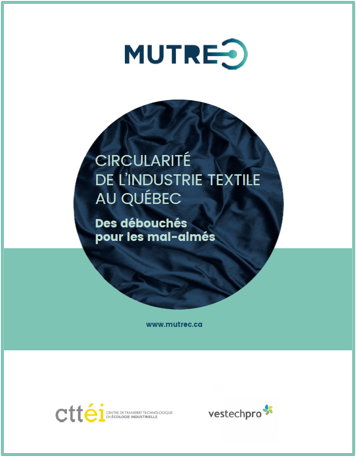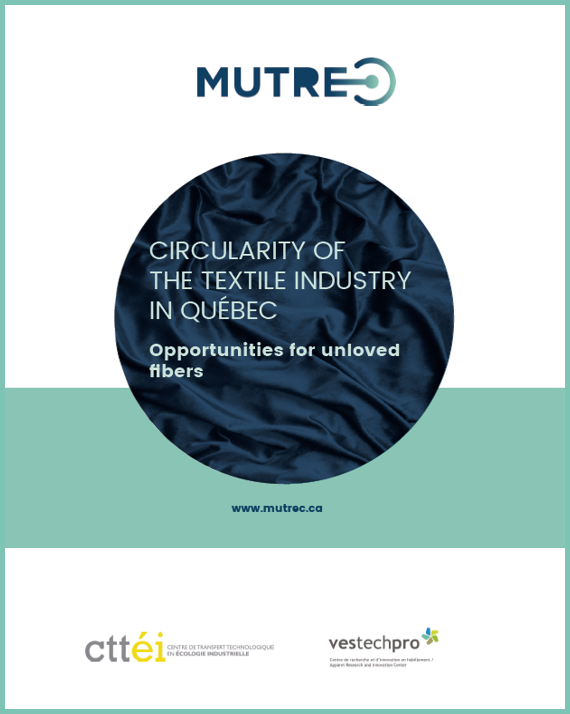Sorel-Tracy, November 24, 2020 - The MUTREC collective is launching a reflection on the circularity of textiles in Quebec with a report that brings together an assessment, avenues for opportunities and action.
Three years of work in open innovation have enabled the members of the MUTREC collective todraw up an assessment of the textile industry in Quebec and to identify outlets for several unloved fibres.
In addition to the lack of domestic fibre production, the report highlights the insufficient reuse and recycling of imported fibres. Two-thirds of these are destined for private consumers (retail trade). The other third is used by industry, commerce and institutions (ICI), in the design of uniforms or the manufacture of furniture.
Improving the circularity of textiles: a major undertaking
" Even though our recovery efforts already leave something to be desired, 48% of the textiles consumed are landfilled and 6% of the fibres recovered are recycled," explains Julien Beaulieu, holder of the NSERC Research Chair in Industrial and Territorial Ecology (CRÉIT ) attached to the CTTÉI and the Cégep de Sorel-Tracy. However, the studies conducted have identified several avenues for development. Such as upholstering furniture, rigid partitions, making piers, rags. Nevertheless, Quebec is struggling with the lack of large-scale recycling facilities.
Marianne C.-Mercier, co-author of this report and head of research and development at Vestechpro, provides further details.
" The absence of eco-design in the development of textile products undermines their potential for circularity. We come up against fibre blends that are practically impossible to separate. Uniforms covered with brand elements that are difficult to remove. Or unusable cuttings. »
Thanks to the collaboration of RECYC-QUÉBEC and committed companies such as Groupe Renaissance, Genfoot and Groupe Lacasse, the report aims to mobilize private and institutional players to improve the development of textiles in Quebec.
"Relying on the development of new popular business models such as shared wardrobe will not be enough. After glass and plastic,we need to think about the textile industry in Quebec," concludes Claude Maheux-Picard, CTTÉI's Executive Director.
Some highlights
- There is no local industrial production of textile fibres in Quebec.
- More than 4 out of 5 garments are produced outside Canada and then imported into Quebec.
- Industries, businesses and institutions (ICI) use one third of textiles in Quebec.
- Only 150,000 tonnes of textile residues pass through the sorting centres each year, out of a potential of more than 300,000 tonnes.
Download the report here :
About MUTREC
MUTREC is a group of experts from complementary disciplines who combine their know-how and creativity to address in an innovative way the problems associated with the development of Quebec's residual textile deposit. It proposes concrete ways to improve the circularity of textiles in Quebec.
This open innovation consortium brings together researchers, designers, government, industry and retail representatives. Among them: the Centre de transfert technologique en écologie industrielle (CTTÉI); the Centre de recherche et d'innovation en habillement Vestechpro; theÉcole de design de l'Université de Montréal; the Centre interdisciplinaire de recherche en opérationnalisation du développement durable (CIRODD); and the Retail Council of Canada (RCC).
About the CTTÉI
Since 1999, the Centre de transfert technologique en écologie industrielle (CTTÉI) has been developing and sharing unparalleled expertise in waste management. It enhances the performance of enterprises and communities through research and development of innovative approaches and technologies. The CTTÉI makes its resources and influence available to the MUTREC collective.


